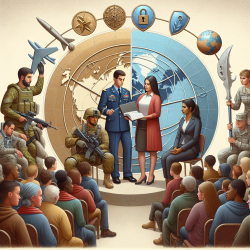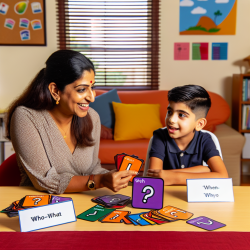Introduction
The intersection of militarism and humanitarianism presents a complex and often contradictory landscape, particularly in Western states. As practitioners in the field of education and therapy, understanding these dynamics can enhance our ability to navigate the challenges faced by our students and communities. The research article "The Geopolitics of Militarism and Humanitarianism" by Killian McCormack and Emily Gilbert offers valuable insights into this intersection, emphasizing the spatial and multiscalar dimensions of the relationship between militarism and humanitarianism.
Understanding the Intersection
The article outlines five key areas where humanitarianism and militarism intersect:
- The use of humanitarianism to modulate war and conflict.
- The rationalization of military intervention as humanitarian.
- Military deployment in response to humanitarian crises.
- The military adoption of humanitarian-style practices.
- The development of weapons under the guise of humanitarianism.
These areas highlight how humanitarian narratives can obscure the political violence inherent in militaristic actions. For practitioners, understanding these dynamics can inform how we approach issues of security and conflict within educational settings.
Implications for Practitioners
Practitioners in education and therapy can draw from this research to improve their skills and approaches in several ways:
- Critical Thinking: Encourage students to critically assess the narratives surrounding humanitarian and military actions. This can foster a more nuanced understanding of global events and their local impacts.
- Awareness of Bias: Recognize the potential biases in media and political narratives that may influence perceptions of conflict and humanitarian efforts.
- Empathy and Support: Develop programs that support students affected by military and humanitarian interventions, providing a safe space for discussion and healing.
- Research and Advocacy: Engage in further research to explore the local impacts of these global dynamics and advocate for policies that prioritize genuine humanitarian efforts.
Encouraging Further Research
The article suggests several avenues for further research, particularly in understanding how these dynamics play out in non-Western contexts and the role of private and neoliberal actors in shaping militarism and humanitarianism. Practitioners can contribute to this research by documenting local experiences and sharing insights with broader academic and policy-making communities.
Conclusion
By understanding the complex relationship between militarism and humanitarianism, practitioners can better navigate the challenges posed by these dynamics in educational and therapeutic settings. This knowledge not only enhances our professional capabilities but also empowers us to advocate for more ethical and effective approaches to addressing global conflicts and their local impacts.
To read the original research paper, please follow this link: The geopolitics of militarism and humanitarianism.










